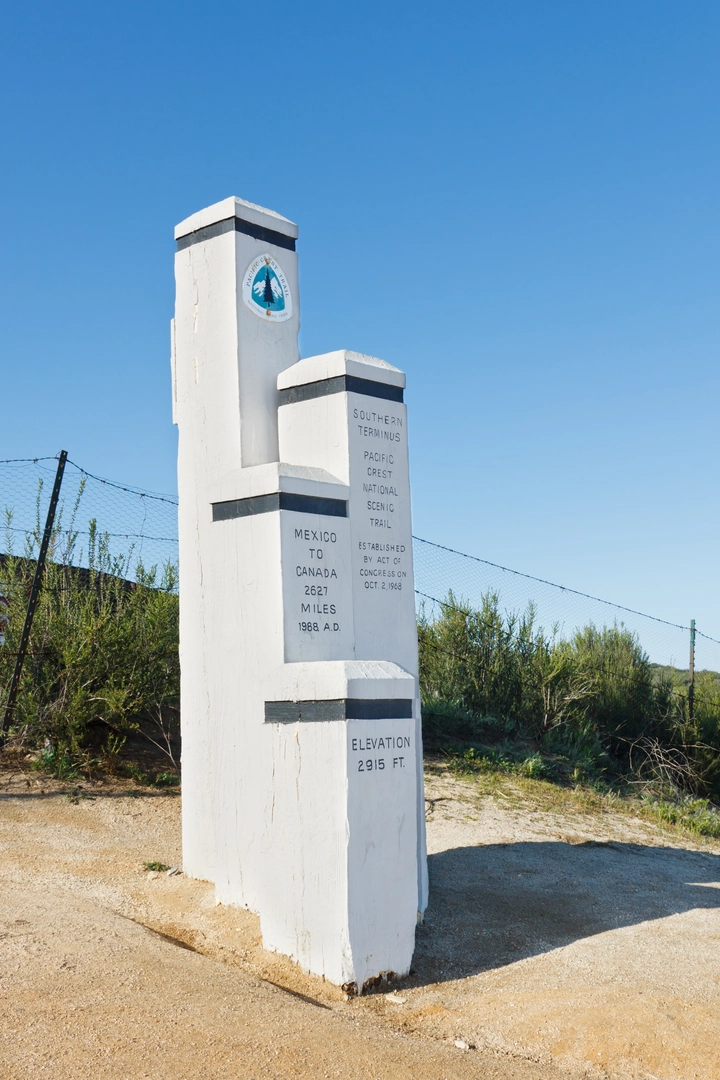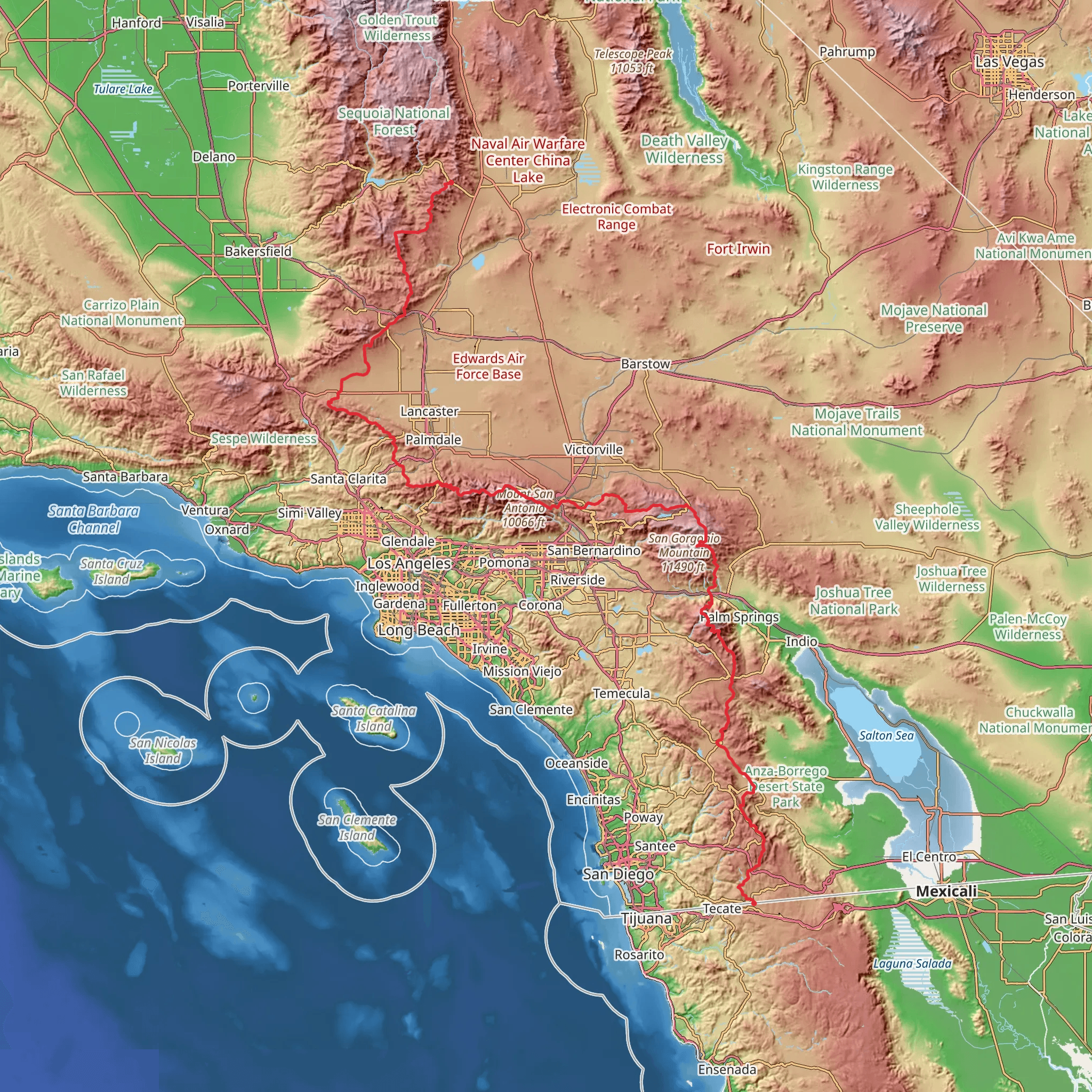Download
Preview
Add to list
More
998.2 km
~62 days
22510 m
Multi-Day
“The Southern California stretch of the Pacific Crest Trail is a diverse and challenging trek full of history and natural splendor.”
Spanning approximately 998 kilometers (620 miles) and with an elevation gain of around 22,500 meters (73,800 feet), the Pacific Crest Trail section through Southern California offers a challenging yet rewarding experience for avid hikers. This point-to-point trail begins near the Mexican border in San Diego County and winds its way north through diverse landscapes, including arid deserts, mountain ranges, and deep forests.
Getting to the Trailhead
The southern terminus of the Pacific Crest Trail is accessible by car or public transport. If driving, hikers can head to Campo, California, which is the nearest town to the starting point. For those using public transportation, taking a bus or train to San Diego and then arranging a shuttle or taxi to Campo is a common approach. The trailhead is located near the small community of Campo, at the southern edge of the Cleveland National Forest.
Desert Landscapes and Mountain Ranges
As you embark on the trail, prepare for the arid conditions of the Mojave and Colorado deserts. The trail meanders through the Anza-Borrego Desert State Park, where temperatures can soar, making it imperative to carry ample water and sun protection. After approximately 109 kilometers (68 miles), you'll reach Warner Springs, a small community where you can resupply and rest.
Continuing north, the trail ascends into the San Jacinto Mountains, offering a stark contrast to the desert below. The elevation gain here is significant, and the temperatures can be much cooler. At around 266 kilometers (165 miles) from the start, you'll encounter the idyllic mountain town of Idyllwild, a perfect spot for a break and resupply.
High Sierra Transition
The trail gradually transitions into the High Sierra as you approach the 652-kilometer (405-mile) mark near Kennedy Meadows. This area serves as a gateway to the Sierra Nevada and is historically significant as a gathering point for hikers preparing to tackle the high mountain passes ahead. It's also a critical resupply point before the remote and challenging sections to come.
Wildlife and Natural Beauty
Throughout your journey, you'll encounter a variety of wildlife, including rattlesnakes, black bears, and mule deer. The flora will change from cacti and desert scrub to pine forests and alpine meadows as you gain elevation. The trail offers stunning views of the desert floor below and, on clear days, vistas that stretch for miles.
Historical Significance
The region is rich in history, from Native American heritage to the Gold Rush era. The Pacific Crest Trail itself was designated as a National Scenic Trail in 1968 and has since become a symbol of wilderness preservation and outdoor adventure.
Navigation and Preparation
Due to the trail's length and varying conditions, thorough preparation is essential. Hikers should plan their resupply points carefully and be prepared for temperature extremes and challenging terrain. For navigation, the HiiKER app is a valuable tool, providing detailed maps and trail information to help keep you on track.
Conclusion
The Southern California section of the Pacific Crest Trail is a microcosm of the state's diverse ecosystems and a testament to the rugged beauty of the American West. Whether you're a seasoned thru-hiker or embarking on a section hike, this trail promises an unforgettable adventure.
What to expect?
Activity types
Comments and Reviews
User comments, reviews and discussions about the Pacific Crest Trail - Southern California, California.
4.8
average rating out of 5
5 rating(s)

